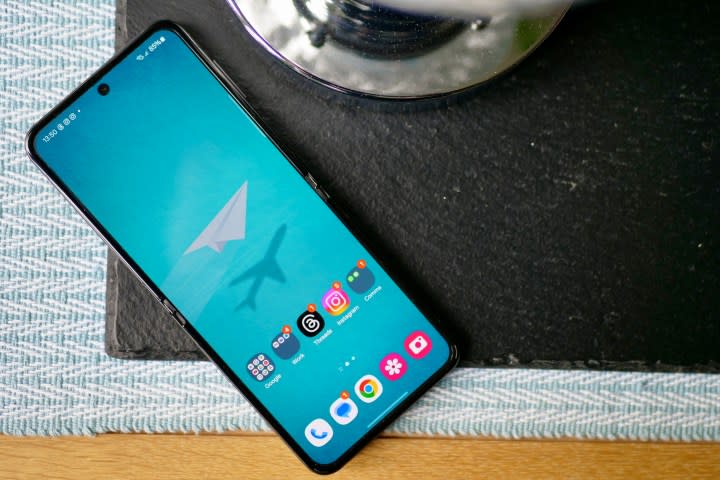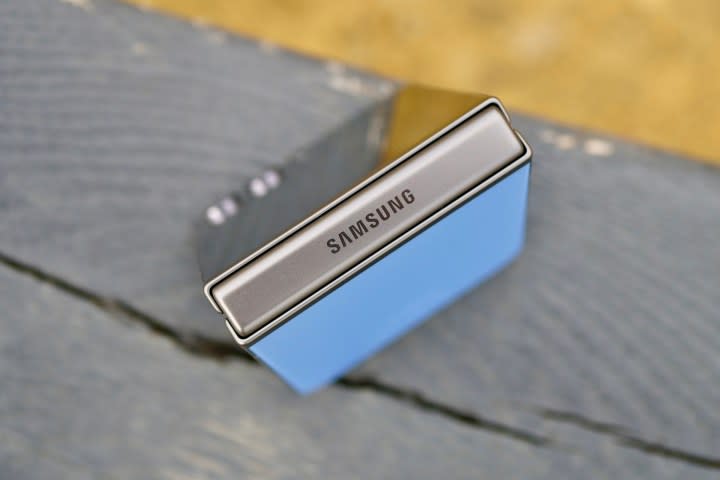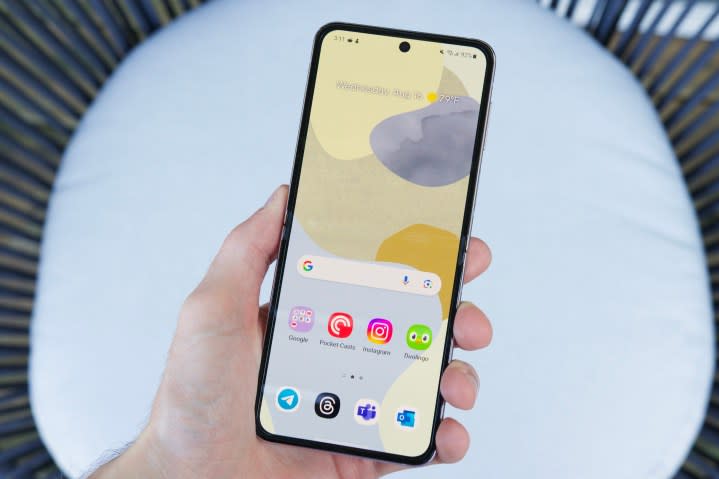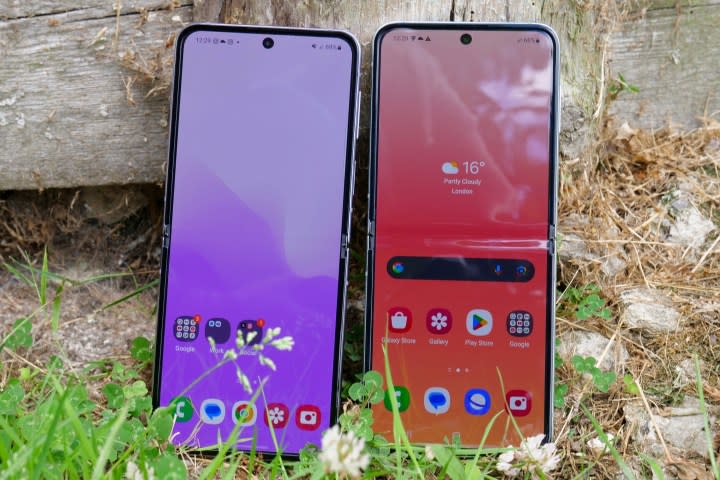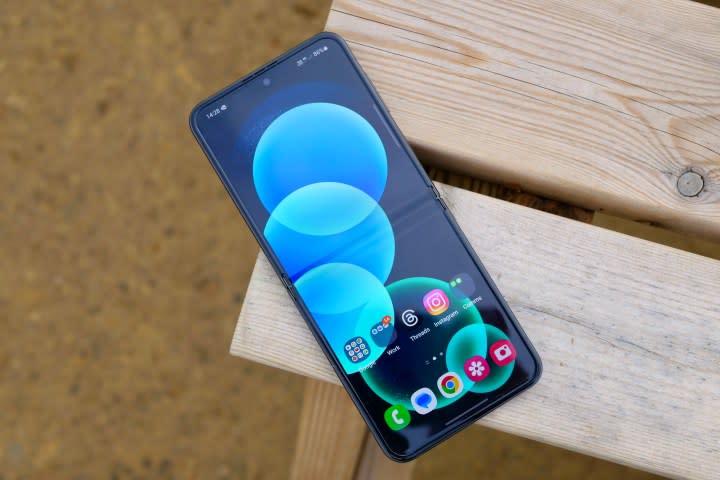Samsung would hate the way I use my Galaxy Z Flip 5
I’m sorry, Samsung, but I have sinned.
I really like the Galaxy Z Flip 5, which I’ve recently returned to for a few weeks, but I’m doing something I’m fairly sure Samsung will not approve of. It goes against everything that makes this little phone special. Quite often, I have the Flip 5 unfolded next to me because I’ve gotten tired of opening and closing it.
It folds, right?
The Galaxy Z Flip 5 is a compact folding smartphone, or a clamshell as some call it. When it’s closed, the phone is easily pocketable, but it can then open out into a regular-sized smartphone. It’s different from the Galaxy Z Fold 5, which is a book-style foldable that starts out looking (mostly) like a regular phone and then opens up to operate like a small tablet.
I like the compact, small size of the Galaxy Z Flip 5. It’s genuinely convenient, takes up no space in my bag, and is only just noticeable when it’s in my pocket. I’ve set up the cover screen to show my wallpaper and several apps, but I was never especially taken with the whole “it runs apps” feature in the first place, so I tend not to bother interacting with the phone this way.
Part of the reason is the requirement to unlock the phone with your fingerprint to do anything, and when it’s closed, the Z Flip 5’s sensor is a pain to locate and slow to react. When it does unlock the cover screen, you have to swipe to see notifications or interact with apps, and because the folded phone is fairly small, it’s not all that ergonomic, so it takes time. When you just want to see a notification, all this fiddling about is frustrating.
Open all the time
It takes me a few moments longer than it should to view a simple message on the closed Galaxy Z Flip 5, and because of this, I’ve slipped into what is likely a cardinal sin in the folding phone world: I leave the phone unfolded. The always-on screen operates as normal so I can see icons related to notifications rather than the orange dot on the cover screen, and the fingerprint sensor on the side of the phone is easier to find than it is when the phone’s closed.
I’m also able to get into the right app much faster. It may be a degree of muscle memory from non-folding phones, but opening the correct app or swiping down the notification shade is so direct compared to the slower swiping on the cover screen. Notifications are rarely particularly important, so I want to see, check, and dismiss them quickly. I don’t want to spend time getting caught up with the Z Flip 5’s foibles.
To make it clear, the closed-up Galaxy Z Flip 5 is very convenient and much less bothersome than pocketing a massive smartphone like the Galaxy S24 Ultra, but now that I’ve returned to it, I have found that no matter how large the cover screen is, I just don’t want to use the phone when it’s folded up. I don’t think this makes the Galaxy Z Flip 5 a bad phone, but the push to make it a “usable dual-screen phone” was largely pointless as far as I am concerned.
Using the Galaxy Z Flip 5 in 2024
Now that I’ve confessed to using the Galaxy Z Flip 5 like a “normal” phone, what has it been like going back to the device I purchased instead of the Galaxy Z Fold 5? Aside from using it differently, the other thing that has stood out is the battery life. I remember it being relatively poor, but the influx of efficient devices with the Qualcomm Snapdragon 8 Gen 3 chipset has really highlighted its shortcomings in this area.
I’ve barely gotten a day-and-a-half of moderate use from the Galaxy Z Flip 5 this time, without playing any games on it, and mostly just using a small collection of apps, the camera, and either Wi-Fi or cellular connectivity. I forgot to put the phone on charge overnight once, and for the first time in a very long time on an Android phone I’m using, the battery was completely dead soon after midday. This wasn’t good performance when the Z Flip 5 was released, but it’s almost unacceptable now, as improvements in efficiency and battery life are noticeable in other phones.
I know this is all quite negative at the moment, but otherwise, I do like the Galaxy Z Flip 5, and I still think it’s a fun phone to own. The screen is bright and vibrant, the software is up to date and logical once you’ve got it set up, and while the camera isn’t packed with features, it still takes fun photos you’ll want to share and keep. It’s a good phone, particularly when you can get it for less than the $1,000 retail price.
The Galaxy Z Flip 6 needs to be better
It’s not long until we expect Samsung to reveal the Galaxy Z Flip 6, and using the Z Flip 5 again has been eye-opening. It has certainly cemented the opinion that the cover screen should be tailored for quick, casual use rather than anything more complicated. More importantly, the battery life needs to be top of Samsung’s list of improvements.
I decided not to buy the Z Fold 5 last year because it didn’t offer a big enough upgrade over the Z Fold 4, and I chose to try life with the Z Flip 5 instead. When the time comes this year, what do I intend to do with the new Samsung folding phones now that I’ve spent more time with the smallest foldable?
I don’t know yet, but unless the Galaxy Z Fold 6 is a very big advancement over the Z Fold 5, I may end up not bothering to upgrade at all. The Z Flip 5 hasn’t continued to encourage me to make use of its one defining feature that makes it special to own, and that doesn’t make me eager to go out and buy another folding phone anytime soon.

